FLAT 30 % OFF Apply Coupon Code GET30
Core Softech Solutions is the best IT Training and Placement Institute in ,Pune.
We provide all IT Training for the freshers as well as for working professionals. Also,we provide wide range of trainings.
Coresoftech Team & Trainers is of IT Consultants which consult our students for career opportunities and support for long time
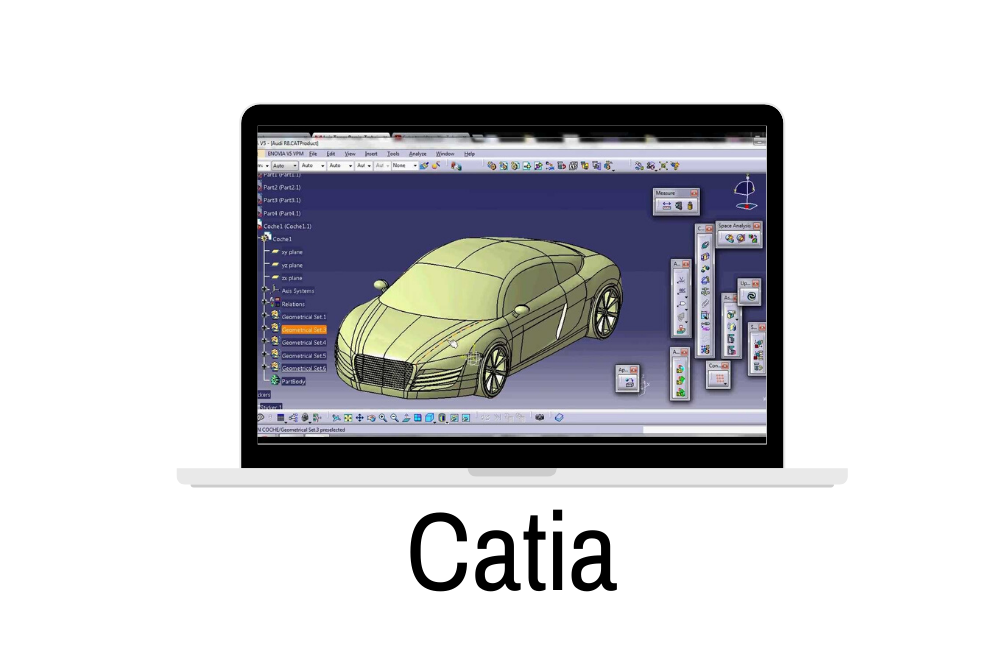
Training Higlights
Live Training
Doubts Session
Lifetime Recording
Free Ebook
Interview Calls
ISO Certificate
Course Syllabus
Full Stack Developer Syllabus
Core Java
Basics of Java
- Java – What, Where and Why?
- History and Features of Java
- Internals of Java Program
- Difference between JDK, JRE and JVM
- Internal Details of JVM
- Variable and Data Type
- Unicode System
- Naming Convention
OOPS Concepts
- Advantage of OOPs
- Object and Class
- Method Overloading
- Constructor
- static variable, method and block
- this keyword
- Inheritance (IS-A)
- Aggregation and Composition(HAS-A)
- Method Overriding
- Covariant Return Type
- super keyword
- Instance Initializer block
- final keyword
- Runtime Polymorphism
- static and Dynamic binding
- Abstract class and Interface
- Downcasting with instance of operator
- Package and Access Modifiers
- Encapsulation
- Object class
- Object Cloning
- Java Array
- Call By Value and Call By Reference
- strictfp keyword
- Creating API Document
String Handling
- String : What and Why?
- Immutable String
- String Comparison
- String Concatenation
- Substring
- Methods of String class
- StringBuffer class
- StringBuilder class
- Creating Immutable class
- toString method
- String Tokenizer class
Exception Handling
- Exception Handling : What and Why?
- try and catch block
- Multiple catch block
- Nested try
- finally block
- throw keyword
- Exception Propagation
- throws keyword
- Exception Handling with Method Overriding
- Custom Exception
Nested Classes
- Nested Class : What and Why?
- Member Inner class
- Anonymous Inner class
- Local Inner class
- static nested class
- Nested Interface
Multithreading
- Multithreading : What and Why?
- Life Cycle of a Thread
- Creating Thread
- Thread Scheduler
- Sleeping a thread
- Joining a thread
- Thread Priority
- Daemon Thread
- Thread Pooling
- Thread Group
- Shutdown Hook
- Performing multiple task by multiple thread
- Garbage Collection
- Runnable class
Synchronization
- Synchronization : What and Why?
- synchronized method
- synchronized block
- static synchronization
- Deadlock
- Inter-thread Communication
- Interrupting Thread
Input and output
- File Output Stream &File Input Stream
- Byte Array Output Stream
- Sequence Input Stream
- Buffered Output Stream & Buffered Input Stream
- File Writer & File Reader
- CharArray Writer
- Input from keyboard by Input Stream Reader
- Input from keyboard by Console
- Input from keyboard by Scanner
- Print Stream class
- Print Writer class
Serialization
- Serialization & Deserialization
- Serialization with IS-A and Has-A
- transient keyword
Generics
Collection
- Collection Framework
- Array List class
- Linked List class
- List Iterator interface
- HashSet class
- Linked HashSet class
- TreeSet class
- Map interface
- HashMap class
- Linked HashMap class
- TreeMap class
- Hashtable class
- Comparable and Comparator
Advanced Java
JDBC
- JDBC Drivers
- Steps to connect to the database
- Connectivity with Oracle
- Connectivity with MySQL
- Connectivity with Access without DSN
- DriverManager
- Connection interface
- Statement interface
- ResultSet interface
- Prepared Statement
- ResultSet MetaData
- Database MetaData
Servlet
Basics of Servlet
- Servlet: What and Why? Basics of Web
- Servlet API
- Servlet Interface
- Generic Servlet
- Http Servlet
- Servlet Life Cycle
- Working with Apache Tomcat Server
- Steps to create a servlet in Tomcat
- How servlet works?
- servlet in Myeclipse
- servlet in Eclipse
- servlet in Netbeans
Servlet Request
- Servlet Request methods
- Registration example with DB
Servlet Collaboration
- Request Dispatcher
- send Redirect
Servlet Config
- Servlet Config methods
- Servlet Config example
Servlet Context
- Servlet Context methods
- Servlet Context example
Attribute
- How to set, get and remove example?
Session Tracking
- Cookies
- Hidden Form Field
- URL Rewriting
- Http Session
Event and Listener
Filter
- Filter
- Authentication Filter
- Filter Config
- Useful examples
Annotation Servlet
JSP
Basics of JSP
- Life cycle of JSP
- JSP API
- JSP in Eclipse and other IDE’s
Scripting elements
- scriptlet tag
- expression tag
- declaration tag
9 Implicit Objects
- out
- request
- response
- config
- application
- session
- page Context
- page
exception
Directive Elements
- page directive
- include directive
- taglib directive
Exception Handling
Action Elements
- jsp:forward
- jsp:include
- Bean class
- jsp:useBean
- jsp:setProperty & jsp:getProperty
Expression Language
MVC in JSP
JSTL
Custom tags
- Custom Tag : What and Why?
- Custom Tag API?
- Custom Tag Example
- Attributes
- Iteration
- Custom URI
Design Pattern
- Singleton
- DAO
- DTO
- MVC
- Front Controller
- Factory Method
- etc.
Maven
- Maven: What and Why?
- Ant Vs Maven
- How to install Maven?
- Maven Repository
- Understanding pom.xml
- Maven Example
- Maven Web App Example
- Maven using Eclipse
Working with IDE
- Eclipse IDE
- Netbeans IDE
- Myeclipse IDE
Working with Servers
Servers
- Apache Tomcat
- Glassfish Server
- JBoss Server
- Weblogic Server
Spring Core
What is Framework
- Different types of Java based Frameworks
- What is different between Struts and Spring
- Spring Modularization
- What is Spring
- Spring Modules
- Features of Spring
- What is IOC and What is need of IOC
- What is Dependency Injection (DI)
- Types of Dependency Injection
- Hands on Exercise for DI and IOC
- What happens in DI behind the scene in Container
- DI with collections (List, Map… etc.)
- When to use Constructor and setter Injection
- Bean wiring
- Bean Scopes
- Types of containers
- Event Handling in Spring
- Auto wiring
- Types of Auto wiring
- Custom Life Cycle Method and it’s limitation
- Spring Life cycle method
- Use of property file
- Spring Bean life cycle
- Configuration with Annotation
Spring MVC
- What is Spring MVC
- Request Flow in Spring MVC
- Controller and Views in MVC
- MVC Form tags and data binding
- MVC different form validation
Introduction to Spring Boot
Spring Security
- What is Spring Security
- Authentication and Authorization
- Spring Basic Security (Username, Password, Roles)
- Create Security Initializer
- Create Custom Login Form
- Adding Logout Support
Hibernate4.x
Hibernate Tutorial
HB Introduction
- HB Architecture
- First Hibernate Example
Hibernate with Eclipse
- HB using XMLHB using Annotation
Hibernate Example
- HB Web application
- HB Generator classes
- HB Dialects
Logging Tool
- log 4j
Inheritance Mapping
- Inheritance Mapping
- Table Per Hierarchy
- TPH using Annotation
- Table Per Concrete
- TPC using Annotation
- Table Per Subclass
- TPS using Annotation
Hibernate Mapping
- One to one
- One to many
- Many to Many
- Many to one
- Mapping
Projection And Criteria
- Tx Management
- HQL
- HCQL
- Named Query
- Hibernate Caching
- Second Level Cache
- Integration
- Hibernate and Spring
Mini Project
Angular
HTML Fundamentals
- HTML Introduction
- How Web Works
- What is WebPage
- HTML Basic
- HTML Fundamentals
- HTML Attributes
- HTML STyles
- HTML Controls
- HTML Formatting
- HTML Forms
CSS Overview
- CSS Syntax
- CSS id @& class
- CSS Styling
- CSS Box Model
- CSS Margins, Dimensions, Display
- CSS Navigation Bar
TypeScript
- What is Typescript
- Example of Typescript
- Basic Data TYpes and Variables
- Using Types
- Variables in Typescript
- Type Assertion
- Operators and Their types
- Decision making constructs
- Loops
- Using Arrays
- Functions
- Writing and using classes
- Constructor method
- Inheritance of classes
- Type Assertion
- Abstract Class
- Working with Interfaces
- All about Generics
Introduction of Angular
Introduction
-
-
- What is Angular
- Architecture of Angular Apps
- Setting Up the Development Environment
- Your First Angular App
- Structure of Angular Projects
- Webpack
- Angular Version History
- Quiz 1: Angular Basics
Section: 2 TypeScript Fundamentals
- Introduction
- What is TypeScript?
- Your First TypeScript Program
- Declaring Variables
- Types
- Type Assertions
- Arrow Functions
- Interfaces
- Classes
- Objects
- Constructors
- Access Modifiers
- Access Modifiers in Constructor Parameters
- Properties
- Modules
- Exercise
Section: 3 Angular Fundamentals
- Introduction
- Building Blocks of Angular Apps
- Components
- Generating Components Using Angular CLI
- Templates
- Directives
- Services
- Dependency Injection
- Generating Services Using Angular CLI
- Assignment 1: List of Authors
Section: 4 Displaying Data and Handling Events
- Introduction
- Property Binding
- Attribute Binding
- Adding Bootstrap
- Class Binding
- Style Binding
- Event Binding
- Event Filtering
- Template Variables
- Two-way Binding
- Pipes
- Custom Pipes
- Assignment 2: Favorite Component
- Assignment 3: Title Casing
Section: 5 Building Re-usable Components
- Introduction
- Component API
- Input Properties
- Aliasing Input Properties
- Output Properties
- Passing Event Data
- Aliasing Output Properties
- Templates
- Styles
- View Encapsulation
- ngContent
- ngContainer
- Assignment 4: Like Component
Section: 6 Directives
- Introduction
- ngIf
- Hidden Property
- ngSwitchCase
- ngFor
- ngFor and Change Detection
- ngFor and Trackby
- The Leading Asterisk
- ngClass
- ngStyle
- Safe Traversal Operator
- Creating Custom Directives
- Assignment 5: Exercise: ZippyComponent
Section: 7 Template-driven Forms
- Introduction
- Building a Bootstrap Form
- Types of Forms
- ngModel
- Adding Validation
- Specific Validation Errors
- Styling Invalid Input Fields
- Cleaner Templates
- ngForm
- ngModelGroup
- Control Classes and Directives
- Disabling the Submit Button
- Working with Check Boxes
Section: 8 Reactive Forms
-
- Introduction
- Building a Bootstrap Form
- Creating Controls Programmatically
- Adding Validation
- Specific Validation Errors
- Implementing Custom Validation
- Asynchronous Operations
- Asynchronous Validators
- Showing a Loader Image
- Validating the Form Input Upon Submit
- Nested FormGroups
- FormArray
- FormBuilder
- Quick Recap
- Assignment 7: Change Password Form
Section: 9 Consuming HTTP Services
- Introduction
- JSONPlaceHolder
- Getting Data
- Creating Data
- Updating Data
- Deleting Data
- OnInit Interface
- Separation of Concerns
- Extracting a Service
- Handling Errors
- Handling Unexpected Errors
- Handling Expected Errors
- Throwing Application-specific Errors
- Handling Bad Request Errors
- Importing Observable Operators and Factory Methods
- Global Error Handling
- Extracting a Reusable Error Handling Method
- Extracting a Reusable Data Service
- The Map Operator
- Optimistic vs Pessimistic Updates
- Observables vs Promises
- Assignment 8: GitHub Followers Page
Section: 10 Routing and Navigation
-
- Introduction
- Routing in a Nutshell
- Configuring Routes
- RouterOutlet
- RouterLink
- RouterLinkActive
- Getting the Route Parameters
- Why Route Parameters Are Observables
- Routes with Multiple Parameters
- Query Parameters
- Subscribing to Multiple Observables
- The SwitchMap Operator
- Programmatic Navigation
- Assignment 9: Blog Archives
Section: 11 Authentication and Authorization
- Introduction
- Application Overview
- Architecture
- JSON Web Tokens
- Starter Code
- Implementing Login
- Implementing Logout
- Showing or Hiding Elements
- Showing or Hiding Elements based on the User’s Role
- Getting the Current User
- CanActivate Interface
- Redirecting Users After Logging In
- Protecting Routes Based on the User’s Role
- Accessing Protected API Resources
Quick Recap
Section: 12 Deployment
- Introduction
- Preparing for Deployment
- JIT vs AOT Compilation
- Angular Compiler in Action
- Building Applications with Angular CLI
- Environments
- Adding Custom Environments
- Linting with Angular CLI
- Linting in VSCode
- Other Deployment Options
- Deploying to GitHub Pages
- Deploying to Firebase
- Heroku
- Deploying to Heroku
- Engines
- Exercise
-
SQL
- Introduction to RDBMS
- Features of RDBMS
- Introduction to SQL
- Basic Terminologies
- PLSQL Data Types
- Primary Key v/s Foreign Key
- The Unique Constraint
- DDL Statements
- DML Statements
- Retrieving Records
- Normalization
- Functions in SQL
- Handling Null Values
Full Stack Developer Project
- Live Project on any e commerce site using Angular as front end, java as backend and SQL as a database
Feed Back - What our Student Says
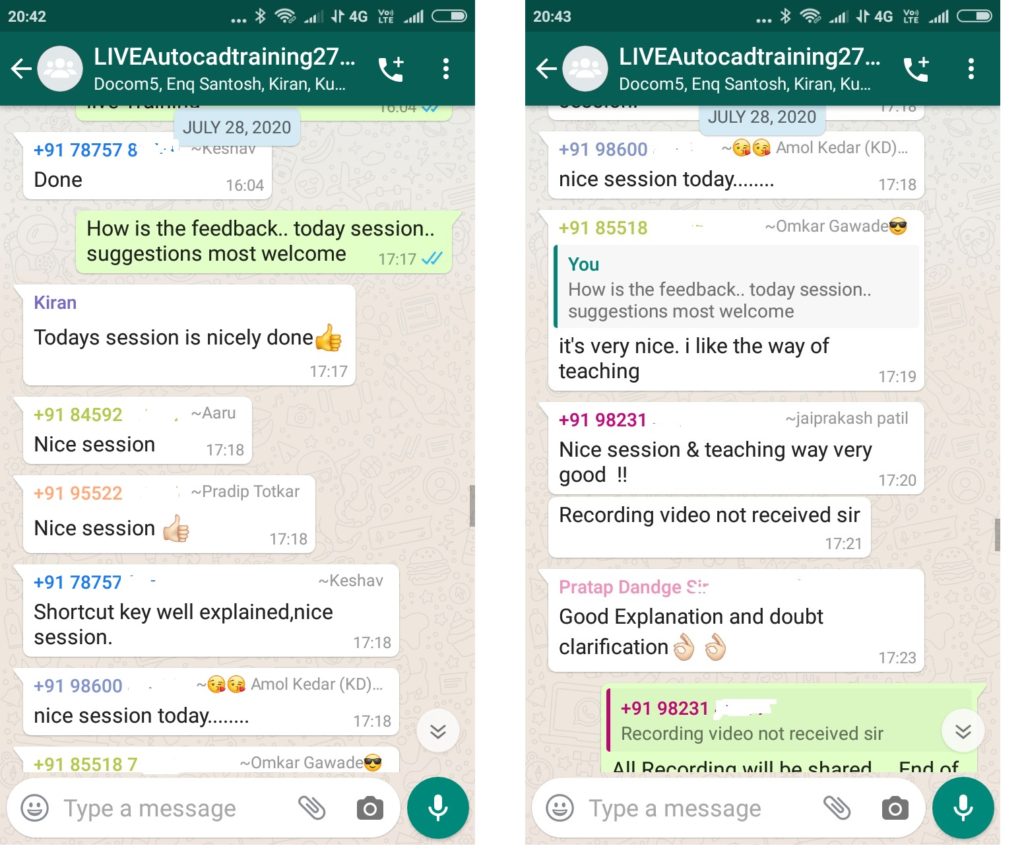
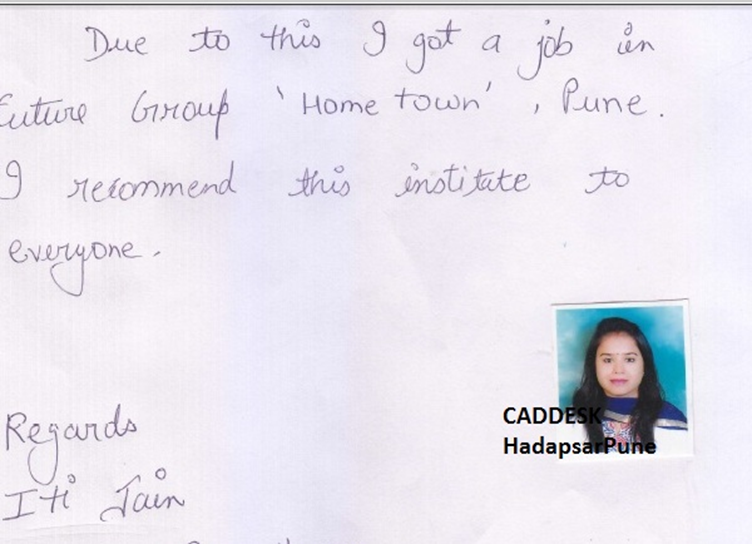
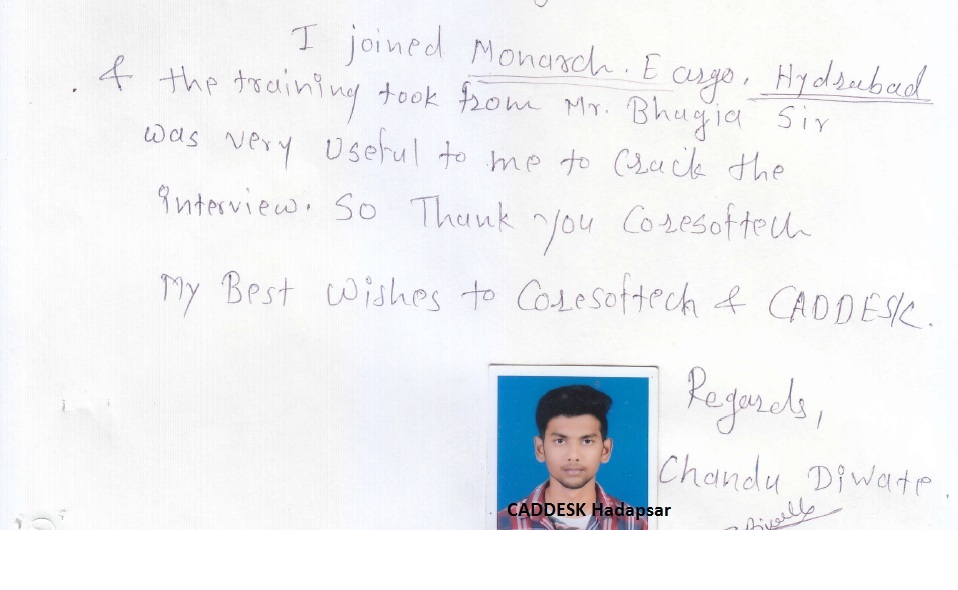
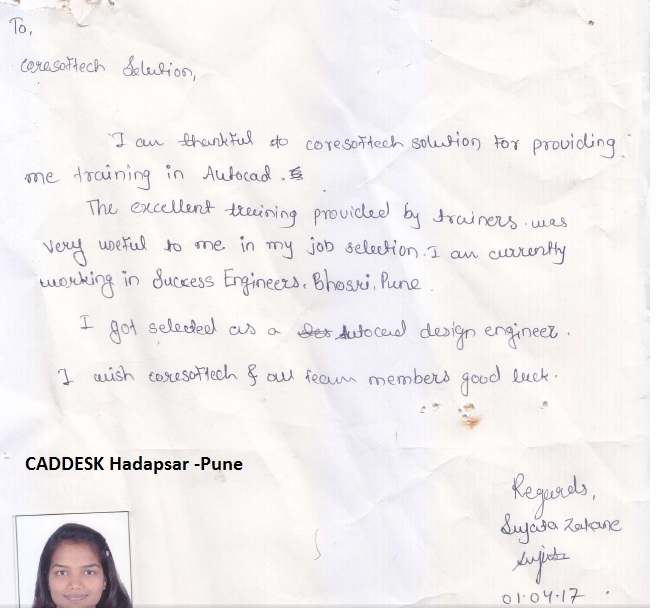
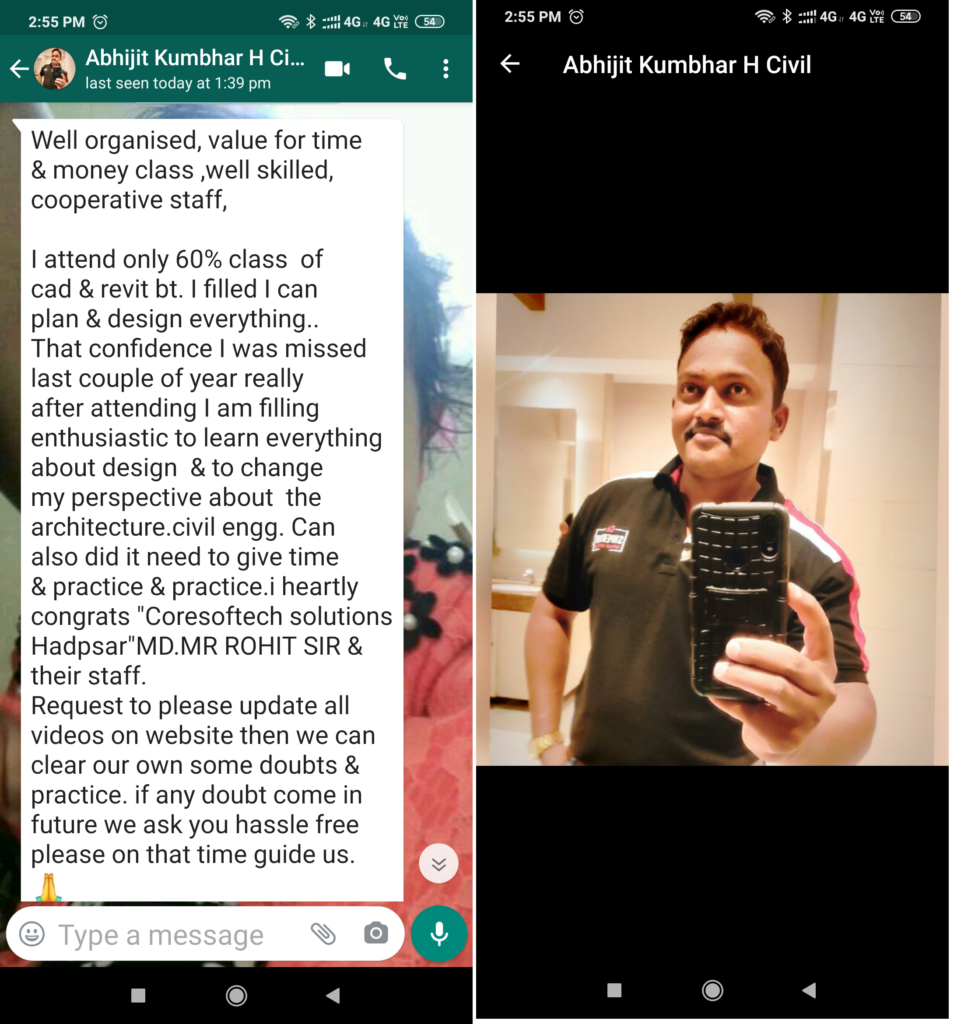
How will you get your certificate?
After Successful Completion Course Students will get ISO Certified SoftCopy via Mails or Can be Easily Downloaded from https://caddeskpune.com
Assistance with all Leading Certification Partner will be Provided on Demand
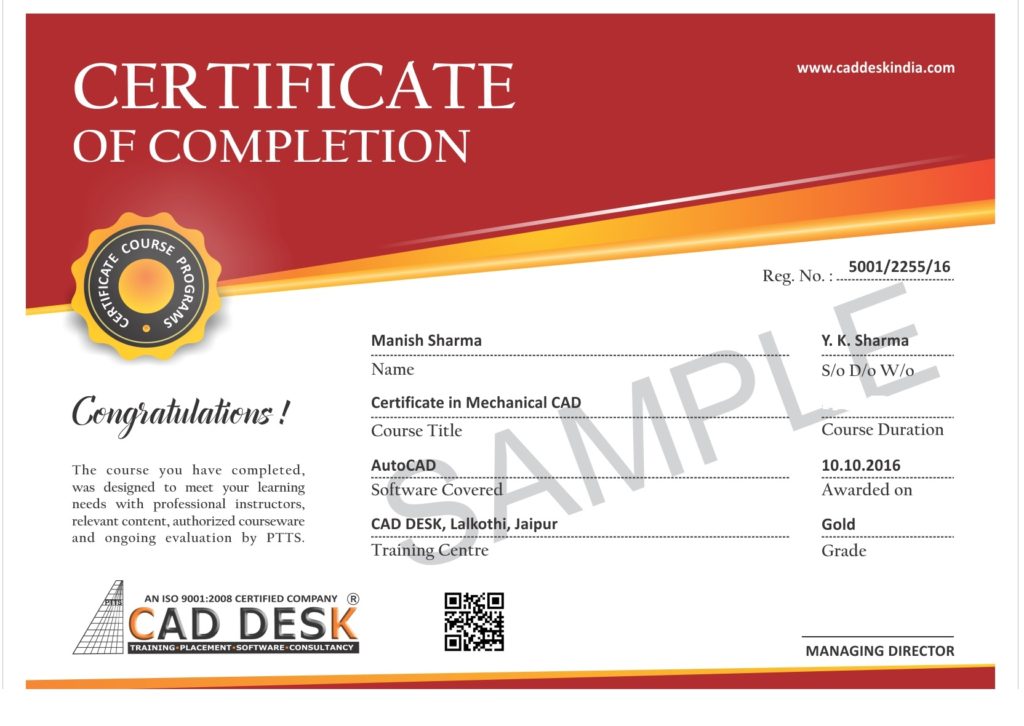
Assistance with all Leading Certification Partner
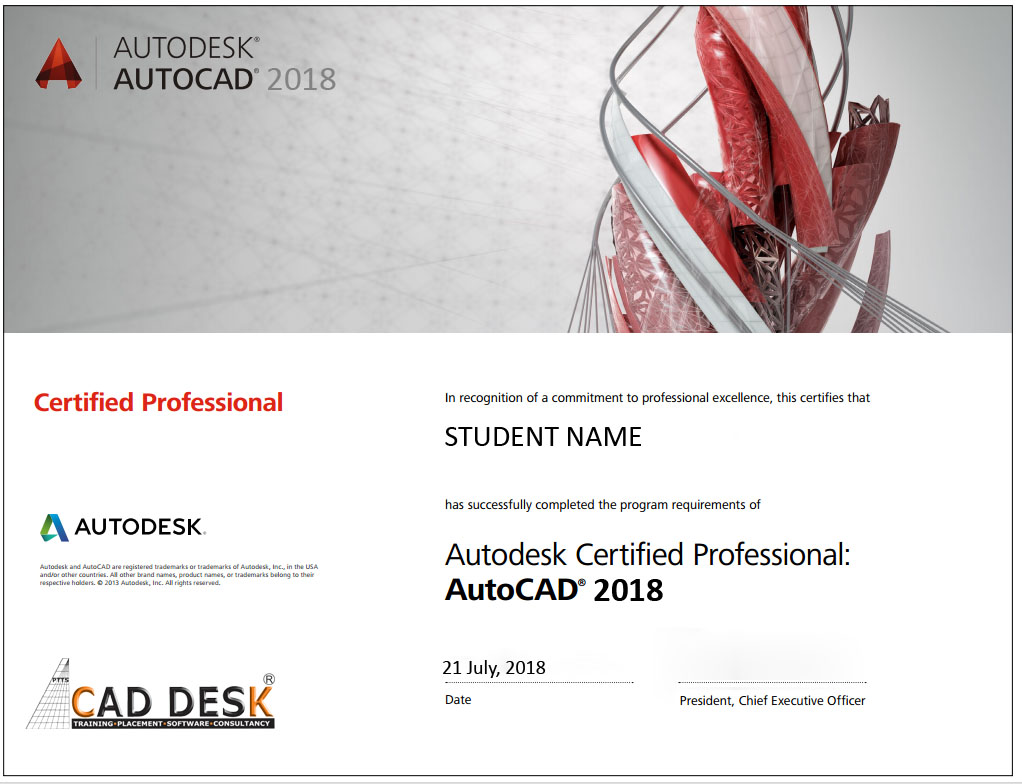
Assistance / Guidance for Licences Partner Dessault Certification
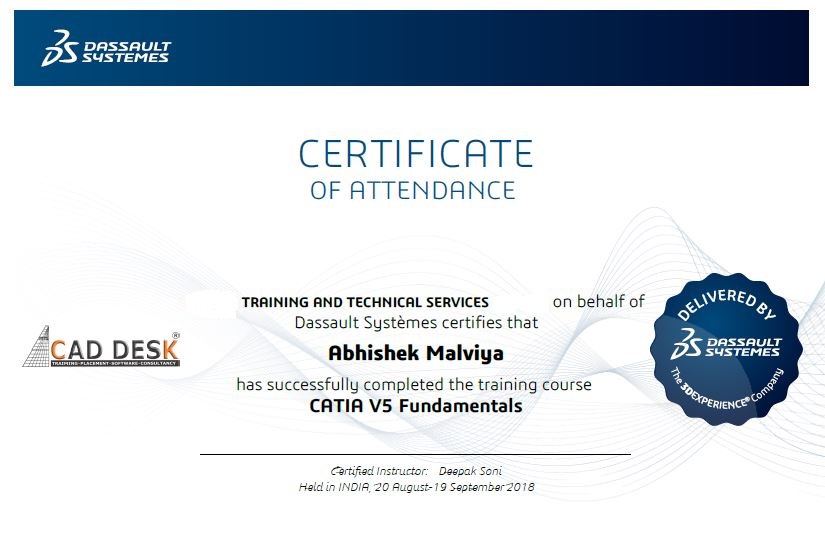
Assistance / Guidance for Licences Partner Certification
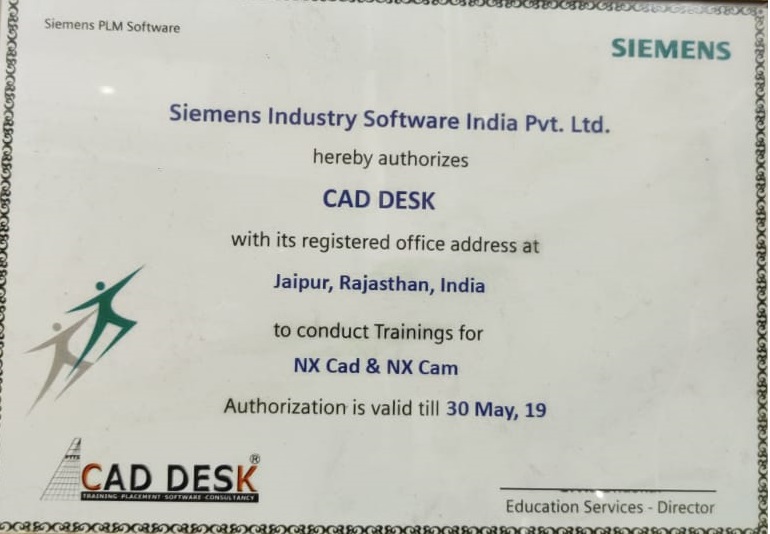
Assistance / Guidance for Licences Partner Certification
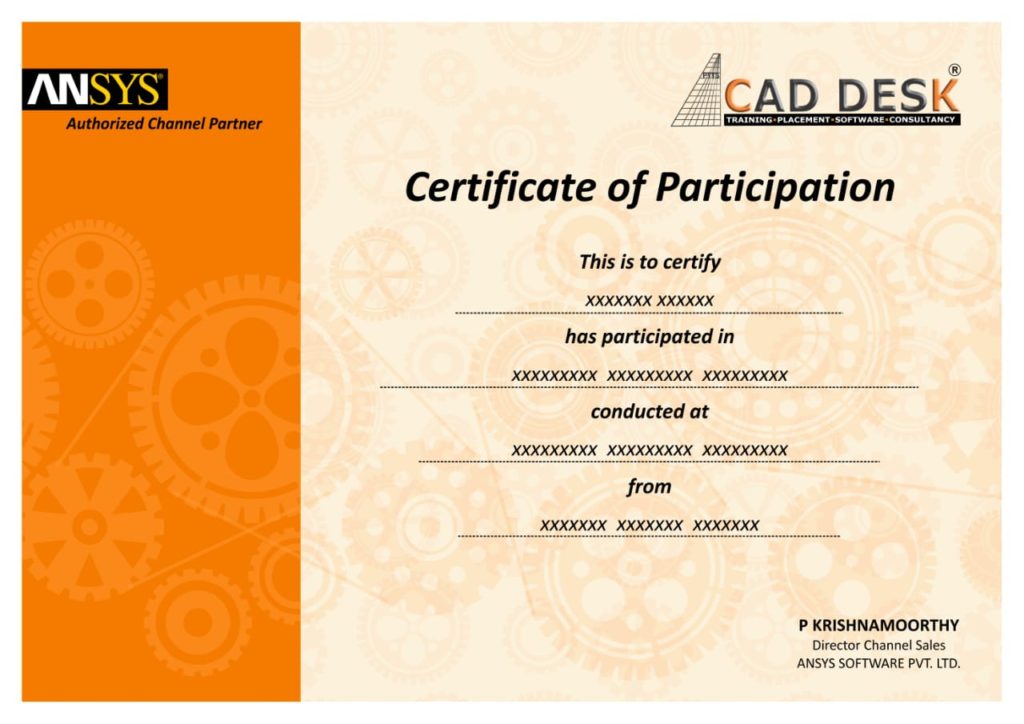
Have More Questions ? Frequently Asked Questions
No such prerequisite, however a basic knowledge to the subject is preferable.
Any person 10th Pass can pursue.
The training mode is LIVE Instructor led online training i.e by ZOOM, Skpye, Google MEET Etc
You have the facility to watch the recorded daily Missed lectures anytime.
Dont worry!! You will get recorded lectures on the mobile/web application, which you can see it later.
The batch start Every Weeks Monday
You can select the preferred start date & Time at the time of registration.
Special Batch / Weekend Batch Customized Training Available.
The average lecture duration shall be average 1 hour LIVE +QA
Extra 1 hour for practice & assignments at home is good.
There will be doubts QA and session everyday During LIVE Training .
You can share yours Doubts Share Screen to Trainer 1 to 1 Basis.
You Can get Training Material, Ebooks Assignments Access through Link during Training, Login Access , Gdrive etc
Once Enrolled you Cannot Cancel, However you can reschedule or Transfer the courses to Other Candidate or Other Softwares Training.
You may Join Other Live Batch ,Next Live Batch Adjustment with Pune Class room Batch & Recording also Available . Request to mail to [email protected] & whatsapp +91-8793166470
On registration we will send the link of the official software website link and you can download the trial software from there.
You Can join live classes through Smartphone or watch recorded videos through Phone anytime anywhere
However, you require Laptop or desktop for the practice and assignments.
You Can attend , Get Also Recording & can again practise with recordings and system -PC /Laptop once its available to you.
The certificate shall be provided in digital form ( E-Certificate ISO 9001:2015 with QR code once you complete the training .
The physical certificate you can take Color printout & laminate with less than Rs 50/- anywhere
Most industries/MNC and Universities/college recognise its certificate.
As off now there is no such authorising body in India for short term online courses so it all works on the virtue of reputation.
We do Provide free 100% Placements Assistance since already we are into placements since 10+ yrs.
100% Job Gurantee Even IIT & IIM also does not provide.
We don’t want to Give false promises …Covid19 taught us there is no guarantee of anyjob and no guarantee of any market conditions .
Offline doubt revision through any of Pune centers in India.
FREE Online rejoining Next Live Batch
Recording Acees Liftime
Placements Assistance

